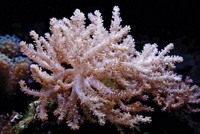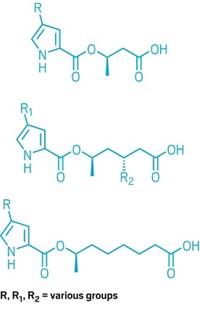Advertisement
Grab your lab coat. Let's get started
Welcome!
Welcome!
Create an account below to get 6 C&EN articles per month, receive newsletters and more - all free.
It seems this is your first time logging in online. Please enter the following information to continue.
As an ACS member you automatically get access to this site. All we need is few more details to create your reading experience.
Not you? Sign in with a different account.
Not you? Sign in with a different account.
ERROR 1
ERROR 1
ERROR 2
ERROR 2
ERROR 2
ERROR 2
ERROR 2
Password and Confirm password must match.
If you have an ACS member number, please enter it here so we can link this account to your membership. (optional)
ERROR 2
ACS values your privacy. By submitting your information, you are gaining access to C&EN and subscribing to our weekly newsletter. We use the information you provide to make your reading experience better, and we will never sell your data to third party members.
Natural Products
Ants fight pathogenic fungi with a compound from bacteria
Leaf-cutter ants in Brazil use the antifungal attinimicin to protect their food supply
by Bethany Halford
January 20, 2021
| A version of this story appeared in
Volume 99, Issue 3

A natural product made by bacteria helps thwart pathogenic fungi from destroying Brazilian leaf-cutter ants’ food supply. Researchers led by Mônica T. Pupo, at the University of São Paulo, and Jon Clardy, at Harvard Medical School, recently identified the compound, which they named attinimicin.
Leaf-cutter ants, also known as attine ants, eat fungus that they cultivate in gardens by gathering vegetation to feed the fungus. “We think we invented farming 10,000 years ago. But the ants have been doing their version of farming for some 50 or 60 million years,” Clardy says.
Scientists thought that the ants’ meticulous gardening kept these nests free of fungal pathogens. Recently, however, scientists discovered that the ants are coated in bacteria that contain molecules that fight such fungal invaders. The bacteria give the ants the appearance that “they were dipped in powdered sugar,” Clardy says. Until now, however, scientists hadn’t been able to pinpoint a single, widespread compound produced by the bacteria that had antifungal properties.
Graduate student Taise T. H. Fukuda traveled throughout Brazil and took bacteria from attine ant nests. After studying extracts from the bacteria, she discovered that two-thirds of all the attine ant nests she surveyed had a natural product that had never been identified before—attinimicin (ACS Cent. Sci. 2021, DOI: 10.1021/acscentsci.0c00978).
David H. Sherman, a medicinal chemist at the University of Michigan who studies natural products, calls the work “a fascinating analysis of the emergence of a unique antifungal agent essential for protection of leaf-cutter ants and their food supply across a vast region of the Amazon” in an email.
Although attinimicin is likely too structurally complex to be a good drug candidate, Clardy says that if it has a novel mechanism of action, it might lead to new antifungal therapies.




Join the conversation
Contact the reporter
Submit a Letter to the Editor for publication
Engage with us on Twitter